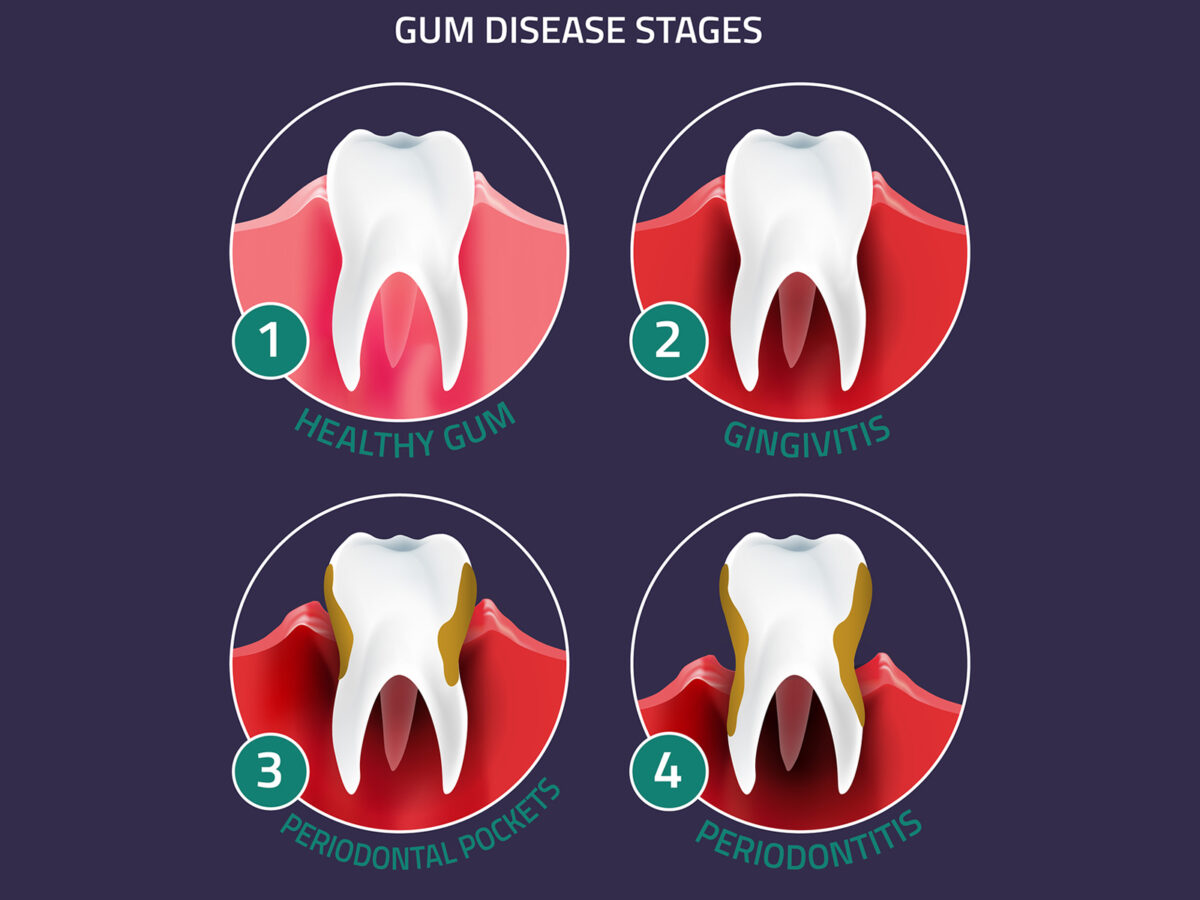Blog
Dental hygiene tips for healthy teeth & gums

What are the 4 stages of gum disease?
When it comes to gum disease, no single disease or one set of symptoms can define this illness. There is a whole range of issues that can occur to the tissues that surround your teeth. If you are worried about whether you have gum disease, you would want to recognize the symptoms to understand at what stage your gum disease is. By knowing this, you can figure out what steps to take to stop the progression of this disease and whether it is time to seek professional help.
The different stages of gum disease are considerably different, and so are their management and treatment options. How each stage of gum disease looks to an individual is based on how far you allow it to progress. In this article, you will get all the information regarding the stages of gum disease to help you understand and identify if you have gum disease and at what stage it is.
Gingivitis
Our mouths are full of bacteria, and plaque is a sticky substance consisting of bacteria and other particles in our mouths. If you don’t brush and floss regularly, plaque forms a coat on your teeth, which looks like grime.
- When we don’t clean up plaque, our bodies’ immune system starts reacting to it, resulting in inflamed gums which look puffy and red. The gums tend to bleed when you brush or floss. You can see this stage in as little as two weeks.
- Gingivitis comes from two words “gingiva” and “itis.” Gingiva means gums, and it means inflammation in Latin. So, gingivitis means inflammation of the gums.
- Plaque that is not getting properly cleaned hardens to form tartar or calculus, which is again of two types:
- Supragingival tartar – People with healthy saliva get this type of tartar on their bottom front teeth. It is easy to spot and easy to clean by your dentist.
- Subgingival tartar – This is a more serious type of calculus that forms under the gum and is black. Subgingival tartar can be hard to detect even for a dentist; hence it is tough to remove them completely.
Periodontitis
Gingivitis can advance to periodontitis, if not treated in time. It occurs in four stages, as outlined below:
- Stage 1: Initial – At this stage, gingivitis has advanced into deeper periodontal structures to the place where tissue connects with teeth. The signs and symptoms of stage 1 are very similar to that of gingivitis; hence it could be harder to discern. This stage is not reversible and needs intervention by dental professionals who would begin by deep cleaning of your mouth.
- Stage 2: Moderate – If initial periodontitis is not treated, your teeth can progress to stage 2, i.e., moderate periodontitis. The difference between the initial and moderate stages is in the amount of damage that happens to the ligament which joins the tooth to its socket. This permanent damage is more obvious to your dentist as there is significant bone loss (around 20 to 50 percent.)
- Stage 3: Severe – There is a significant potential for tooth loss at this stage. You might still not feel pain but notice the foul breath, a bad taste in your mouth, and your teeth looking longer (due to receding gums). You might also observe loosening or shifting of your teeth. At this stage, you have all the dental treatment options, including periodontal surgery. You might not be able to save some of your teeth and need dental implants or dentures.
- Stage 4: Severe with teeth missing – When you reach stage 4, you will already be missing some teeth. The front teeth would show significant drifting with gaps between your teeth. At this advanced stage of periodontitis, you are susceptible to other health conditions such as diabetes or even a heart attack. It is extremely necessary to get treatment started if you have reached this stage. At this stage, most people consider replacing all their teeth with dentures.
Apart from different stages, periodontitis also has rates of progression. From slow to moderate and rapid progression, periodontists might require different treatment plans for the different progression rates. It is hard to spot the signs and symptoms of periodontitis; hence it is highly recommended to visit your dentist regularly. If you can catch gum disease early, there are high chances of complete reversal. But if you have reached the stage of periodontitis, you will need to manage it for the rest of your life.
